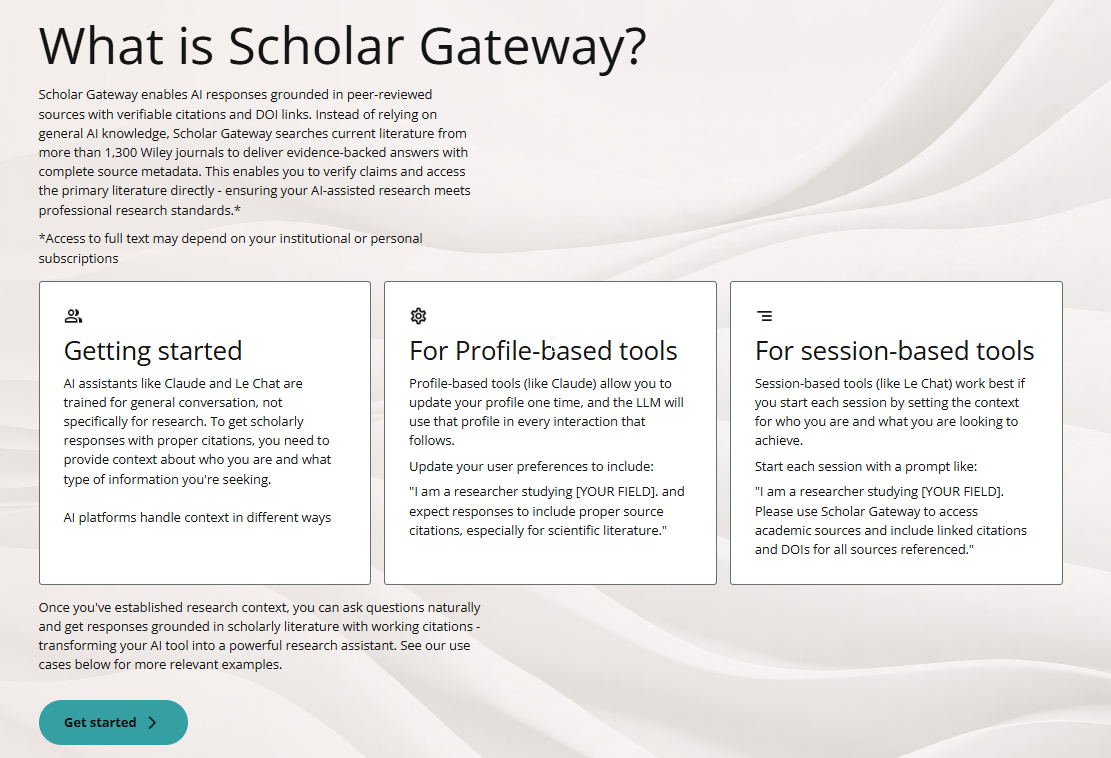Securing FastAPI applications using OAuth2 doesn’t have to be complex. No matter which OAuth2 authorization server you use - Auth0, AWS Cognito, Okta, Microsoft Entra, or Keycloak - axioms-fastapi provides production-ready security for your FastAPI application.
Postagens de Rogue Scholar

AI search tools like Elicit, Consensus, and Scite.ai have spent years racing to build centralised indexes of academic content— first by indexing the open content that is available and then trying to get publisher partnerships.

Otherlands is unlike any other book I’ve encountered.
Appalachian Figures A coalfield lawyer in a national spotlight In the spring of 1938, reporters crowded into the federal courtroom at London, Kentucky.
Appalachian Figures On the House floor in Frankfort, Charles “Charlie” Siler never stopped looking like what he said he was back home: a farmer from the hills who happened to hold a seat in the state legislature. White haired, soft spoken, and rarely flashy, he spent more than two decades representing the 82nd District of Whitley and Laurel counties, after an earlier career as a decorated Army lieutenant colonel.
In the summer of 1913, a photographer clambered through the streets of Matamoros, Mexico, stepping past shattered walls and fresh graves with a camera and a pocket full of glass plates. The man who made some of the best known images of the Mexican Revolution on the Texas border was not a native of the Rio Grande Valley.
In the 1830s and 1840s, the clerk of tiny Harlan County, Kentucky, signed court papers with a practiced hand. On Revolutionary War pension files and land disputes alike, the formula appears over and over: “I, John G. Crump, clerk of the court of Harlan County, do hereby certify…” From that courthouse world on the upper Cumberland came a son who would spend his life on a very different frontier.
Appalachian Figures Dan Johnson Haley started life in a Cumberland River town best known for a courthouse square and a football field tucked against the mountain. Born at Pineville in Bell County in 1940, he grew from three-sport Panther to one of the most successful high school football coaches Kentucky has ever seen, with more than 250 wins and state title runs in Lexington, Paducah, and Bowling Green.
Appalachian Figures On summer evenings at Middlesboro Country Club, regulars still point toward certain fairways and talk about the scores that once came off that nine hole layout. For more than forty years, the course record on this little crater rim track belonged to one of their own, a Bell County kid named George Ancil Cadle.
I have been running automated curation tests for many years now, at least from before 2018. Because it has been done without funding, it has not been as nicely integrated, and depends, for example, first on the RDF generation to be integrated in the GitHub Action. So, I still run them regularly (often in the morning during breakfast). Meanwhile, the curation tests help the project to monitor and maintain the quality of the pathways.

This book is squarely at the intersection of being an objectively great thing to have in the world, and a subjectively great thing to have on my gaming shelf. I’ve been playing tabletop RPGs since I was 16, and running Dungeons &